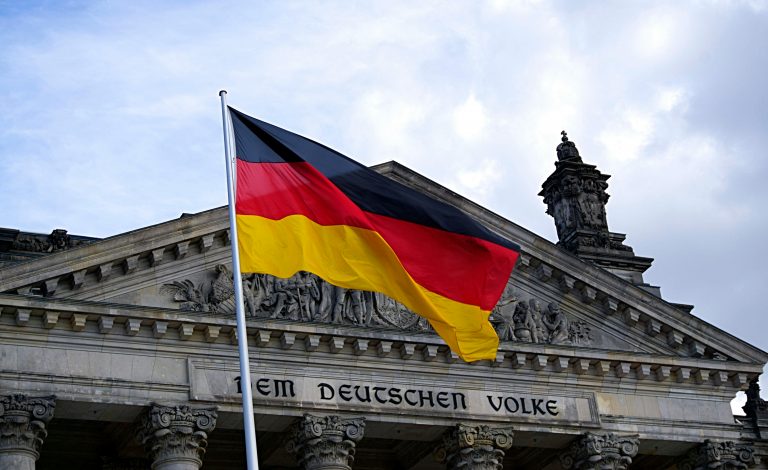
Revised forecasts for the German economy in 2025 indicate minimal growth, with projections significantly downgraded from earlier estimates. The German government now expects GDP to grow by just 0.3%, a sharp reduction from its previous forecast of 1.1%. This aligns with estimates from other economic bodies, reflecting a consensus of stagnation amid ongoing challenges. Similarly, the European Commission predicts a modest 0.7% growth, while other institutes, such as the IfW Kiel and DIW Berlin, forecast near-zero growth or slight contractions, ranging from 0.0% to 0.2%.
These revisions highlight persistent economic headwinds, including subdued domestic and foreign demand, high energy costs, geopolitical uncertainties, and structural issues like labor shortages and bureaucratic inefficiencies. Uncertainty surrounding U.S. trade policies, particularly potential tariffs, further dampens the outlook, especially for Germany’s export-driven manufacturing sector. Despite some positive factors, such as rising real wages and expected interest rate cuts, the overall sentiment remains cautious, with recovery not anticipated until 2026, when growth is projected to range between 0.8% and 1.3%.
German consumer spending has been subdued due to high inflation in recent years, which eroded purchasing power. Although inflation is cooling and real wages are rising, consumer confidence remains low, partly due to economic uncertainty and fears of job losses in key industries. High interest rates, while starting to decline, have also dampened investment in housing and other sectors. Germany’s economy is heavily reliant on exports, particularly in manufacturing sectors like automotive, machinery, and chemicals. Weak global demand, especially from key markets like China and the U.S., has hit German exporters hard.
Register for Tekedia Mini-MBA edition 19 (Feb 9 – May 2, 2026): big discounts for early bird.
Tekedia AI in Business Masterclass opens registrations.
Join Tekedia Capital Syndicate and co-invest in great global startups.
Register for Tekedia AI Lab: From Technical Design to Deployment (next edition begins Jan 24 2026).
China’s economic slowdown and shifting focus to domestic production have reduced demand for German goods, while potential U.S. tariffs under a new administration could further hurt exports. The loss of cheap Russian natural gas following the Ukraine war has significantly increased energy costs for German industry. While energy prices have stabilized somewhat, they remain higher than pre-crisis levels, squeezing profit margins, especially for energy-intensive industries like chemicals and steel.
Germany’s ambitious push toward renewable energy and decarbonization (the Energiewende) requires massive investments in infrastructure, technology, and workforce training. While necessary for long-term sustainability, these costs are a short-term burden on businesses, particularly small and medium-sized enterprises (SMEs), which form the backbone of the German economy (Mittelstand). Germany faces a severe shortage of skilled workers, exacerbated by an aging population and declining birth rates. This demographic challenge limits the economy’s growth potential, particularly in sectors like technology, healthcare, and construction.
Efforts to attract foreign talent are underway but are hindered by bureaucratic hurdles and language barriers. Germany’s economy is weighed down by excessive red tape, slow administrative processes, and a lag in digitalization. Many businesses, especially SMEs, struggle with outdated infrastructure and slow adoption of digital technologies, reducing their competitiveness compared to global peers. German industries, particularly in automotive and manufacturing, face challenges in adapting to global technological shifts, such as the transition to electric vehicles (EVs) and automation. Insufficient investment in research and development (R&D) and a risk-averse business culture have slowed innovation.
Germany’s export-driven economy is highly vulnerable to shifts in global trade policies. The potential return of protectionist measures, such as U.S. tariffs under a possible Trump administration, poses a significant risk. Tariffs on German cars and machinery could severely impact exports, given the U.S. is one of Germany’s largest trading partners. Ongoing geopolitical tensions, including the war in Ukraine, conflicts in the Middle East, and U.S.-China rivalry, create uncertainty for global supply chains and trade flows. This disproportionately affects Germany, which relies on stable global markets for its economic model.
The shift to electric vehicles (EVs) has caught German automakers off-guard, as they face fierce competition from Tesla and Chinese manufacturers. High production costs in Germany, combined with delays in scaling up EV production, have weakened the sector’s global position. Germany’s industrial base, once a global leader, is losing competitiveness due to high costs, supply chain disruptions, and weaker demand. Some companies are relocating production to lower-cost countries, further hollowing out the industrial sector. Although inflation has moderated from its 2022 peak, it remains above the European Central Bank’s (ECB) 2% target.
This limits the ECB’s ability to cut interest rates aggressively, which would otherwise stimulate investment and consumption. Elevated interest rates, implemented to combat inflation, have increased borrowing costs for businesses and households, dampening investment and construction activity. While rate cuts are expected, their pace and impact remain uncertain.



